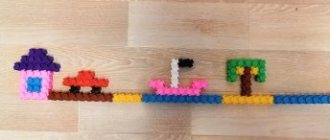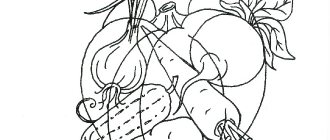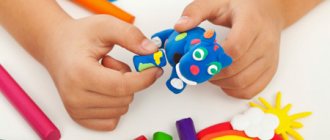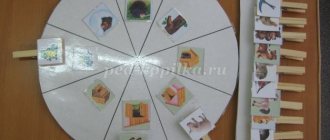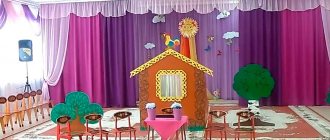What are fine motor skills?
Fine motor skills are the ability to make precise small movements with the fingers and hands. The work involves the muscular, nervous, skeletal and often visual systems.
The term “dexterity” is often used for the concept of “fine motor skills.” Movements can be simple (grasping a toy) or complex (writing and drawing). Fine motor skills are very important in the harmonious development of a child.
From birth to 2 months
At this age, movements are subordinated to innate reflexes. The baby moves his fingers involuntarily, that is, for no reason or in response to external stimuli. For example, if you press your fingers on his palm, he will clasp them quite tightly.
This is the so-called “grasping reflex”, which was inherited from our ancestors when baby monkeys were held on their mother’s fur by grasping. Normally, by the end of two months, the baby is already reaching out to things with his hands and can grab you or himself by the finger.
From 2 to 6 months
During this period, primary coordination begins to form - the child connects vision to hand movements. This realization is a great achievement. The baby is quite capable of grabbing objects that are in his field of vision and skillfully putting them into his mouth. He can look at his hands for a long time.
Hands in the mouth are an attempt to get rid of the itching when teeth appear. The child does not yet know how to sit, but you can let him touch different surfaces to develop tactile sensations.
From 6 to 12 months
In the second six months of life, the child’s vision improves and the muscles become stronger. The assimilation of grip begins - first with tweezers (fingers with a pinch), then with pinch (thumb and index are used).
The child tries to transfer objects from hand to hand. If he wants to get something, but cannot reach it, he pulls out his pen and points at the thing with his finger.
At 8–12 months, the baby is able to pick up objects and put them in a box. As a rule, he already uses a pinch grip for this. He can repeat the movements behind his mother, for example, if she pushes the car, he will do it too. The first interest in drawing appears, but unconsciously.
From one year to two
During this period, the level of development is already much higher - the child takes objects and studies them. He begins to distinguish between sizes, shapes and weights. Trying to dose his efforts.
At 1.5 years old he can hold a spoon in his hands and can unwrap candy himself. Trying to build a tower from several cubes.
Closer to 2 years, he no longer turns all the pages in a book at once, but can turn one page at a time. With interest, he unscrews and screws on the cap of the Agusha puree in a sippy cup package, specially designed for this purpose.
From two to five years
During this period, static grip has already been mastered, when the child grabs a thing and holds it in his hands. Dynamic skills are being studied - the ability to work with an object in the hands, for example, draw with a pencil, cut paper.
- At 3–5 years old, fine motor skills are more developed in girls, so if a boy lags behind, this can be considered the norm. Children develop self-care skills - using a toothbrush and comb. Many can dress themselves, fasten buttons, rivets, and lace their shoes.
- At 2–3 years old, a child can engage in modeling. He freely opens the desk drawers and takes out the contents. Draws simple shapes with his fingers.
- At 3 years old, a child can string beads on a wire, collect cereal with a spoon and pour it into a glass. At 3.5, he enjoys modeling, but can only make balls and sausages, draws a line without lifting his hand, knows what clasps and Velcro are.
- At 4 years old, a child traces contours and can build tall towers from cubes.
- At 4–5 years old, he colors pictures and draws with a pencil. At the same time, the drawings are more conscious - there is a pipe, windows, etc. on the house.
Development of fine motor skills in preschoolers and help for mothers
If your child is not interested in developmental aids, offer him real things to do.
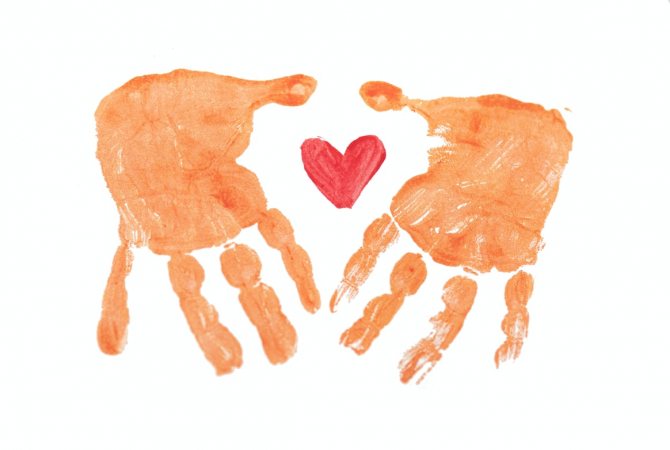
Here are exercises in which a baby can practice fine motor skills, helping parents and feeling needed and almost like an adult:
- Peel hard-boiled eggs. Peel tangerines.
- Separate split walnuts (kernels from shells). Peel pistachios.
- Hang washed clothes on a floor dryer. It is especially useful to use clothespins.
- Separate clean socks into pairs and fold dry laundry.
- Wash and/or dry dishes. You can start with plastic items.
- Wash your toys (wash them properly, and don’t play with washing).
- Collect debris from the floor. Help collect objects scattered on the floor (buttons, carnations, beans, beads).
- Try to put on your shoes and dress yourself. And also take off your shoes and undress. To do this, some shoes and clothes should be available to the child so that he can dress up whenever he wants. Learn to put on gloves yourself. Try lacing your sneakers.
- Help wind thread or rope into a ball.
- Help parents unscrew various caps - water cans, bubble baths, toothpaste, etc.
- Tear, crumple paper and stuff it into shoes to be stored.
- Pick berries at the dacha or in the forest.
- Get something out of a narrow gap under a cabinet, sofa, between furniture.
- Wipe off dust.
- Turn the lights on and off.
- Peel and stick stickers.
- Turning the pages of a book.
- Sharpen pencils (with a sharpener). Erase the drawn scribbles with an eraser.
Why is it important to develop fine motor skills?
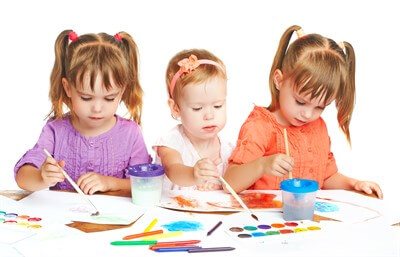
The connection between the mobility of fingers and the brain, in particular speech, was first identified by V. M. Bekhterev. “The hand is the brain coming out,” Kant also wrote.
This means that any deep psychological processes (conscious, unconscious) are always reflected in the position of the hands and gestures.
Teacher V. A. Sukhomlinsky Fr.
Such phrases are due to the fact that movements of the hands and fingers are directly related to the center of speech. Moreover, each finger has its own projection.
Important! Fine motor skills affect thinking and imagination skills and are associated with motor and visual memory. By developing it, the child becomes observant, attentive, and better expresses his thoughts and desires. Its level is one of the indicators of a child’s intelligence readiness for school.
Development of fine motor skills in preschoolers when drawing and writing
To develop graphomotor skills, you can print out the “Trace and Color” activities:
How to develop fine motor skills in a child?
The main thing is motivation to practice. Experts have created many special games that effectively influence motor skills. You just need to take age into account. The key to success will be regular play (every day) and persistence.
Tip 1. Invite your baby to play with the sensory box
Such games can be offered when the child no longer tries to put everything that moves or is given into his mouth.
A sensory box is a simple but interesting idea for a child. Take a large container or basin, fill it with clean sand or cereal and bury several small objects in it - pebbles, cones, figurines, etc.
A child up to one year old will happily dig into the litter, bury and dig up toys. If he gets bored with this, you can make a vegetable garden in a basin: beds and plant acorns or twigs in them, put figures of animals, people, houses, cars.
Tip 2. Make a busy board for your baby
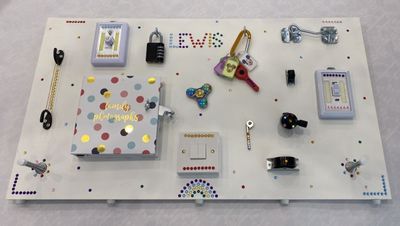
This type of activity is suitable for children over 1 year old. A business board is any plywood or furniture board on which various buttons, levers, switches, latches, hinges, wheels, shoe Velcro are attached, that is, everything that can be touched, pressed, pulled, twisted, etc.
If, when you press the button, a light comes on or a sound appears, there will be no limit to your delight. But all devices should not be sharp or dangerous.
You can also glue small toys to the table/board yourself using tape or plaster and ask your child to free the captives from captivity.
Tip 3. Paint with finger paints
This activity is suitable for babies over 1 year old, but if the child is interested, you can start earlier. It is still difficult for a baby to use brushes, but there is no need to put off painting for this reason.
Special finger paints are now sold in stores: even if the baby swallows a little dye, there will be no harm. By the way, they are tasteless.
You can make finger paints yourself, but they are duller and do not wash well. For preparation, use salt (it will make the paint tasteless), flour or starch for thickening, and vegetable oil. “Edible paints” can also be made from jam, jam, mustard, and ketchup.
The baby will be happy to first study the paint, try to see his handprints and fingerprints on the cardboard, and then eagerly begin to draw lines and circles.
At 3–4 years old, children already depict cars, the sun, a house, etc.
Tip 4. Look at what educational toys are in children's stores
In stores, do not choose dolls for girls and shooting games for boys, but take care of the usefulness of the toy for fine motor skills. Believe me, this is also a very interesting thing. Give preference to this.
For children under one year old, stretchers with bright pictures or figures, musical toys, pendants with tactile elements - rustling, ribbed, rubber and fabric - are suitable.
As the year approaches, you can buy simple wooden or plastic cubes: move them from the box to the floor and back, stack them on top of each other - build a house. Also suitable are toy cars that can be pushed, and shaped toys in the shape of animals made of different materials.
You can try wrapping toys in paper and inviting your child to unwrap them.
Toys from one to three years:
- Pyramids - they are so varied in shape that you can find one for every taste: round, square, triangular, etc. And if you also buy knockers with a hammer, bodyboards with pullers, the joy will go off scale.
- Beads that need to be collected by size, color or pattern.
- Sorters with large parts, games with clothespins, kinetic sand.
- Massage balls for rolling on the hand, tactile and ribbed tracks.
Over the age of three, children can already trace drawings, shade and paint, and repeat simple shapes. You can prepare your hands for writing - different simulators are suitable for this, for example, in the form of a wooden board with holes, lines, curved patterns that need to be traced with a wooden stick. You can also practice using regular stencils for drawing curved lines.
Children will have fun sorting small parts by colors, shapes and other features. Today special kits for such sorting are sold. You can also buy mosaics to assemble according to the diagrams.
A new word in the field is special children's storage facilities, for example, a cabinet for sorting garbage, household appliances, buttons, and “transport.” The game is a small chest of drawers with retractable cells and slots. The child’s task is to correctly arrange the figures and objects in them.
Designers like Lego are great for developing motor skills.
Tip 5. Teach your child to write with a pen
This can be done when the baby learns to read. Writing is also useful because it trains the hand with its dynamic grip. To encourage your child to write, tell him that he won’t be accepted into school without it (children dream of going to school and will try, although they will, of course, accept them without it too) or ask him to write a letter to Santa Claus about gifts.
Tip 6. Testoplasty
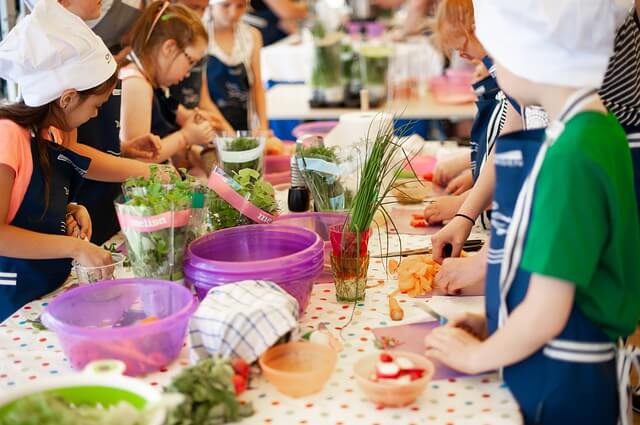
This includes modeling from plasticine, clay and salt dough. There are no limits to imagination here: you can sculpt not only sausages and balls, but also figures of people, animals, and household items.
The figures can be divided, then molded again, etc., made into flat cakes, pasted over jars, twigs, etc. etc. Lay out the given design on cardboard or plywood. Sculpt geometric shapes, numbers, letters.
Tip 7. Finger gymnastics
“Finger games” are activities in which, with the help of their fingers, children try to dramatize some kind of fairy tales and stories. Many games require the participation of both hands; they will help orient children in the concepts of “right”, “left”, “up”, “down”, etc. Each finger needs to be trained.
It is better to combine such activities with reading poetry, fairy tales, working on nursery rhymes, jokes, that is, any speech material. When listening to fairy tales, children learn with adults to portray characters, move their fingers, perform actions.
For little ones, 3-5 minutes a day is enough, after 5 years - up to 15 minutes. More details about finger gymnastics here.
Tip 8. Ball games
For a child, you can pick up a small ball with a diameter of 3–5 cm. For an adult, you need a larger one so that it completely occupies the palm, but can be comfortably grabbed with your fingers.
Children prefer bouncy, light and bright balls.
It's better to start with a massage ball. The ribbed needle-shaped surface affects the nerve endings, activating blood circulation.
Achieved effect:
- encouragement to communicate;
- accuracy of movements in terms of strength, dexterity and eye;
- reaction speed and muscle strength.
Tip 9. Graphic tasks
Graphic skills are taught already in kindergarten during fine arts classes, but they can be supplemented at home. This activity helps to better understand the width and length of the sheet and prepares the child’s hand for learning to write.
It is better if the tasks have a figurative and semantic load. For example, drawing waves, rainbows, puffs of smoke, fish scales. Children willingly fill in the missing details of flowers and objects, trace patterns, and color the outlines of images and pictures in albums.
Experience in graphics is gained by performing various hatchings, copies of drawings obtained by tracing contours along dots or dotted lines, or patterns along cells. At the same time, the child learns to understand the terms “top-to-bottom” and “left-to-right”, to stroke evenly without spaces, without going beyond the outline.
Game "Scissors"
Purpose of the game: coordination of movements, training of hand muscles, concentration, development of fine motor skills of the hands.
Materials needed: a tray with scissors (preferably plastic ones with blunt ends) and several sheets of thick colored paper. Some sheets have cut lines marked.
Progress of the game: The presenter asks a riddle: Two ends, two rings, and a carnation in the middle. After the child has guessed correctly, the presenter offers to cut the paper with scissors. If the child did it easily, he is given the task of cutting along the lines and performing complex movements to cut out the pattern.
It should be taken into account that, having acquired the skills to confidently hold scissors, the child will then be able to hold a pencil and draw precise lines on paper with the same confidence.
Game "Little Pharmacist"
Purpose of the game: development of fine motor skills; finger movements, coordination.
Materials needed: On a small tray are tweezers, a cup with beads and a platform with slots for beads. There are exactly as many beads in the cup as there are cells in the platform. Each cell should be colored to match the color of the beads. You can use more beads at the beginning.
Progress of the game: The presenter talks about pharmacists and how they prepare various medicines. Shows how to transfer beads using tweezers. Then he invites the child to fill the cells with beads. When the platform is full, the beads are transferred back using tweezers. The game can be complicated by changing the size of the beads and platform cells. However, it should be taken into account that the game is quite complex and requires the child to have extreme concentration and internal control when working. If a child's bead falls onto the tray, he can always correct the mistake. Since the game requires great precision in movements, it is necessary to note each successful action of the baby.
Game "Colored Drops"
Purpose of the game: development of fine motor skills, finger movements, concentration, coordination.
Materials needed: On a tray is a platform for freezing water in the refrigerator. At the top, the platform is divided into three overlaps of red, blue and yellow. Next to the tray are 3 bottles of colorful water. The water is colored with yellow, red and blue food colors (you can use sparkling water). Each bottle contains a pipette with a thick rubber cap. Little sponge.
Progress of the game: The presenter shows how to transfer water from different bubbles using a pipette to the corresponding cells of the platform. The child repeats, and gradually the cells are filled with water in accordance with their color. The water is then transferred back into the vials using pipettes.
The child not only develops his fingers by working with a pipette, but also trains in the differentiation and distribution of colors, in their comparison and discrimination.
Game "Find the surprise"
Purpose of the game: development of fine motor skills of the hands, coordination of movements; teaching patience.
Necessary materials: candy wrappers (10-15 pieces), small items (badges, buttons, pebbles, etc.).
Progress of the game: The presenter wraps the badge in 4-5 candy wrappers. The child must unwrap all the candy wrappers and fold them carefully.
Game "Embroiderers"
Purpose of the game: development of fine motor skills, refined finger movements, concentration, coordination.
Materials needed: On a tray are sheets of cardboard with lines drawn on them. There are simple drawings, and there are more complex ones. There are holes on the lines where the needle and thread will go (in more complex tasks, these holes are only marked with a dot). A ball of woolen thread, 1-2 thick needles.
Progress of the game: The presenter talks about embroiderers, if possible, shows various embroideries and invites the child to play, explaining how they embroider. Then the child takes the needle and inserts the thread into the eye of the needle. At first, an adult helps him with this. Later he does it on his own. The ends of the thread are connected and tied into a knot. Then the child makes stitches on cardboard with holes (for a lighter option, you can use a cord instead of a needle), threading the needle up and down. It should be noted that working with a needle, especially threading and tying a knot, is very difficult for a small child. At first, it’s better not just to show, but to patiently perform these operations together with him, hand in hand, and accurately capture the moment when you can let go of the child’s hand and invite him to act independently.
Game "Lace up your shoe"
Purpose of the game: mastering the skill of dressing, developing fine motor skills, coordination, spatial orientation.
Materials needed: a pair of sneakers and laces.
Progress of the game: The presenter shows how to lace a sneaker and asks the child to lace the second sneaker in the same way. During the game, you must first show the lacing option and lace up with your child. As the game becomes more complex, you can only show ready-made samples.
Game "Beads"
Purpose of the game: development of fine motor skills, coordination, discrimination by shape and color of objects, concentration.
Necessary materials: thread, buttons of different sizes and colors.
Progress of the game: The presenter invites the child to make beads. You can give the task to make beads according to the sample, choosing buttons according to shape and color.
Game "Colorful clothespins"
Purpose of the game: development of fine motor skills of the hands, training in color discrimination, development of attention.
Materials needed: 2 sets of baskets with clothespins. The clothespins are painted red, yellow, blue, green (3 of each color). The basket can be replaced with a cup or plate, or a plastic bucket. The main thing is that the clothespins easily cling to the edges.
Progress of the game: The leader and the child each have a basket with colored clothespins. The leader takes the basket, puts it on the table and asks the child to give him a clothespin and name its color. If the baby doesn’t know, then the leader names the color himself. Then the presenter shows how you can attach a clothespin to the edge of the basket with three fingers.
When the child masters this action and can easily attach clothespins, for example, all the clothespins are the same color and name their color, he is given the task of attaching the clothespins in a certain color sequence, performing a certain sequence of clothespins as on the leader’s basket. You should pay attention to the fact that the presenter attaches the clothespins with three fingers, because the child must see the correct movements.
Repeated repetition of the movement of unclenching and squeezing clothespins trains the fingertips, provides a tonic massage and pressure on the muscle points responsible for activating the speech centers of the brain.
By observing which hand the child prefers to work with, you can determine the dominant hand. However, it is advisable for the child to work with both hands.
Game "Let's put it in order"
Purpose of the game: development of fine motor skills, coordination, discrimination by shape and color of objects, concentration.
How to play: Pour beads of two colors into a bowl (about 5-7 beads of each color) and place two saucers to the right of the bowl. Suggest: “let’s put all the red beads in one saucer, and all the green ones in the other.” To spice up the game, say, for example, that this is a treat for the bear and the bunny, and the bear only likes cherries, and the bunny only likes gooseberries. You need to move the beads one at a time, taking them with three fingers (show). If some beads fall on the table, ask them to pick them up with a scoop. Be sure to finish the job - this skill is very important. Therefore, at first, take fewer beads.
Game “Sprinkle with a Spoon”
Place two cups on the tray: on the left is a cup with cereal, and on the right is empty. (Both cups should be dry.) First, moving the child's hand, show how to take a partial spoonful of cereal, wait until the cereal stops falling from the spoon, and, smoothly moving your hand, move the spoon to the right cup and tip it over it. Help your baby pick up cereal when there is little left (tell him to bend the cup with his left hand). It is useful to combine this exercise with stirring. For example, a child can pour sugar into tea and place it himself.
Game “Come on, catch it!”
Place two plates on the tray: on the left - deep, and on the right - shallow. Pour water into a deep plate and throw in a few small floating objects. Invite your child to catch them one by one with a spoon and place them in a small plate. At first, help him by guiding his hand slightly. Make sure your child holds the spoon correctly. It is important to complete the exercise, transfer all items to a shallow plate, and collect spilled water with a sponge.
Game “Catch it out of the water”
Pour water into a bowl and throw in a few small floating objects: pieces of cork, twigs, etc. Invite your child to use a small sieve with a handle to catch all these items and place them on a plate on the tray to the right of the bowl. The baby should hold the sieve in his right hand.
Game "Magic Sieve"
Say: “Rice and semolina are mixed in this cup (show grains of rice and semolina separately). How to select all the rice grains from here? This is difficult to do even with your small and dexterous fingers. But a sieve will help you!” Separating one grain from another is like a magic trick for a child. Explain why this happens by first pouring clean semolina into the sieve, and then rice. The sifted rice should be poured into the prepared plate.
Game “Putting the cakes with a spatula”
For this exercise, you can “bake” cakes from plasticine or use small objects (for example, large buttons), or, outside, make them from snow or wet sand. The “cakes” should not be in the shape of balls so that they do not roll off the spatula.
Game “There was a puddle and it’s not there”
This exercise has great educational value: if a child spills something, he will be able to clean up after himself. First, teach your baby to transfer water from one plate to another with a sponge. Place two plates on the tray: on the left with a small amount of water, on the right empty. Demonstrate how to use a sponge by scooping water into one bowl and squeezing it over another. Please note that water should not drip from the sponge onto the tray. Then pour some water on the tray and show them how to wipe up the puddle by scooping it up with a sponge.
Game "Whipping cream"
Pour some water into a bowl and add a few drops of shampoo. Show your baby how to beat by holding the whisk correctly and making clockwise movements. The left hand should hold the bowl at this time. Draw your child's attention to the result - the appearance of foam. When the child begins to beat on his own, help him at first by slightly guiding his hand. Having finished whipping, the child must clean up after himself, carefully wiping away any puddles.
Game "Don't spill and don't spill"
First, pour some cereal into the jug and show your child how, holding the jug with his right hand and holding it with his left, pour the cereal into a glass standing to the left of the jug. (The child should sweep all spilled grains into a dustpan with a brush). Don't forget to discreetly praise your child if he cleaned up neatly. You should move on to transfusion only when the child has mastered oversleeping well. Help him start and finish the transfusion - this is the hardest thing for him. Show how to clean up spilled water with a sponge.
Game “Collecting mushrooms in the forest”
Place pieces of foam rubber on the floor and tell your child: “Here’s a basket for you, try to collect all the mushrooms in the clearing!” Show how to take pieces of foam rubber: with three fingers of your right hand. The collected “mushrooms” must be placed one at a time in the basket. Make sure your child collects all the “mushrooms”: this develops attention and teaches accuracy.
Game "Beads"
Purpose of the game: development of fine motor skills, coordination, discrimination by shape and color of objects, concentration.
Progress of the game: The presenter invites the child to make beads. You can give the task to make beads according to the sample, choosing buttons according to shape and color.
Game "Open and Close"
Come up with a game: for example, the baby can be a doctor who has a lot of jars of medicine, or a housewife who keeps different cereals in jars. Place several small jars with closed lids in front of the child (the jars should be different in size and shape). Offer to open all these jars, and then close them again, choosing the right lids. If the lids screw on, make sure your child twists the lid and not the jar.
Game “Collect all the beads”
Throw pebbles into the sand. (If playing at home, sprinkle on a tray). First, invite your child to collect pebbles with the first three fingers of his right hand (reinforcing the skill). Then show how to use the sieve: hold it in your left hand, and use your right hand to scoop sand into the sieve. The remaining stones in the sieve must be carefully poured into a bucket.
Game “Sprinkle the paths”
Invite your child to sprinkle “sand” (semolina, millet) on a 3-5 cm wide path on the table. Limit it with something, for example, strips of paper. Play: the path can go from one match house to another. Sand should be sprinkled with the same three fingers (folded in a “pinch”) without going beyond the edges of the path. When playing in the yard, you can make a path between two
Game "Find a Pair"
Pick up several pairs of identical small objects, for example two buttons, two cotton balls, two spools, etc. Place them in two identical paper bags: one item from the pair in one bag, the other item from the pair in another bag. Ask your child, without looking, to put his hand into the first bag and pull out any object from there. Now (again without looking) let him try to find by touch the exact same object in the second bag.
Didactic toys and their role in the process of working on motor skills
Any educational toy is designed for learning, but it must be colorful, attracting attention and the desire to play with it.
TOP 10 most popular educational toys for fine motor skills:
- Educational mats. They have different surfaces: “grass”, “thorns”, “hard stones”, “soft stones”, “cones”, etc. The child will also be interested in musical rugs, where steps and paths are drawn. For older children, you can find rugs that fit together like puzzles. They often have letters or numbers on them.
- Figures on magnets. The surface of the refrigerator is a wonderful and favorite “field of action” for a little explorer. There are many refrigerator magnets; you can choose them according to your child’s age. Very young children will begin to develop the skill of moving magnets and learning the names of animals. Older children are interested in learning letters and numbers, building syllables and words.
- Play dough or polymer clay. Here the child expresses himself. Modeling massages the fingertips, improves tactile sensitivity, and develops imagination. A child learns to sculpt geometric figures. It is not recommended to give regular plasticine to small children; a special one is sold for them - “modeling dough”.
- Kinetic sand. Consists of quartz sand and synthetic additive E900. It is absolutely safe, more flexible than usual, does not dry out and does not stick to your hands. You can use it to build figures, castles and much more. Sand comes in different colors.
- Easels and drawing boards. All children love to draw, regardless of skill. There are 2-in-1 easels with a chalk board and a magnetic board on which you can draw with felt-tip pens and immediately erase them.
- Mushroom screw. A very simple toy on which you can trace the entire process of screwing a mushroom with a screw head into a leg with a hole. At the same time, manual dexterity is perfectly trained, and the muscles of the hand and wrist are strengthened. For older children, you can buy construction sets where you can assemble cars, houses, airplanes and much more using small bolts and nuts.
- By the age of 3, mosaics are of interest. To begin with, the child needs to be shown how to build a house or a flower; in the future, he will delight you with his own inventions, which at first may not represent anything specific. You can add puzzles. Start with a small number of elements (from 6 pieces), large in size.
- Laces. They help develop perseverance, logic, and improve the eye and flexibility of the hand. You can start after a year, for example, putting multi-colored pasta on a thread or wooden toys, sewing on a button (with a wooden needle), trying to lace in different ways (stitches, crosses).
- Lego type constructor. This toy delights kids of any age. There are many benefits from it - it trains modeling and design skills, creativity, memory, observation and attentiveness. The game is bright and attractive. Construction is the easiest way to develop a child’s spatial thinking, motor skills, creative abilities and voluntary actions. The Lego collection has a variety of models - from fire engines and ambulances, boats to entire islands and cities.
- Finger Theater. This toy will help develop all the fingers on both hands, strengthen the hand (which prepares for writing), improve imagination, thinking, memory, stimulate the speech apparatus, and help better navigate space.
As you can see, there are a huge variety of games, toys and tasks for developing fine motor skills in children. Remember, the more developed the hands, the smarter your child is.
When getting to know the world, the baby works, and does not passively contemplate. With this he lays the foundation for his first knowledge. Do not scold him when he fails, and do not use him as an example for others. He will succeed too.
